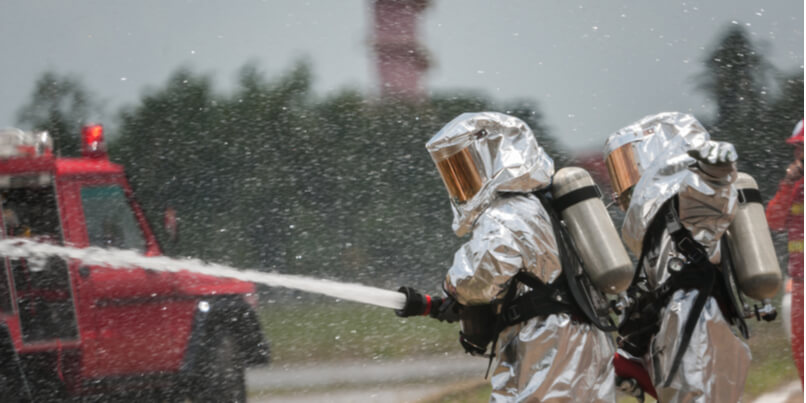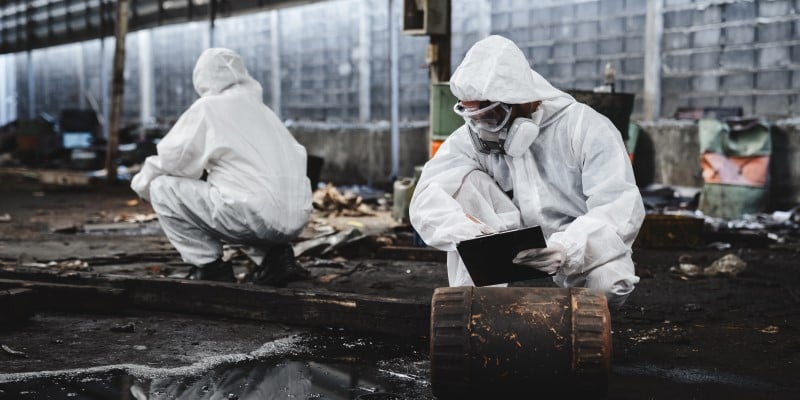 All emergency situations present some element of risk for first responders - however an incident can be further complicated by the presence of ionising radiation.
All emergency situations present some element of risk for first responders - however an incident can be further complicated by the presence of ionising radiation.
In some scenarios, having familiarity with the different locations where radioactivity is used can provide responders with some forewarning of the hazard that they are about to encounter - for example, in the case of a vehicular accident involving the transportation of a radiological source, or an incident that takes place within a hospital's nuclear pharmacy.
In other situations though, the radiological hazard may not be suspected, expected or immediately apparent.
Radiation safety has formed part of emergency responder training for several decades - encompassing a broad range of topics from awareness, detection and recognition of radiological hazards to technical knowledge, time-distance-shielding, and environmental safety.
The impact of radiological events can be significantly reduced through a combination of comprehensive emergency planning, the conducting of structured radiation safety training programmes and the allocation of appropriate radiological surveying equipment.
From a practical perspective, the instrumentation used in radiological surveying is itself fairly simple to use. It is also important however to ensure that essential hands-on skills are supported by an understanding of the basic principles that underpin the subject of radiation.
In this blog post, we've pulled together some of the key terms that are specifically relevant to the understanding of radiation dose.
Dose
- When measuring ionising radiation, there are two units that need to be classified: the radioactivity of the source (measured in becquerel or curie) and the dose of ionising energy that is absorbed by a person (expressed in sieverts/grays or Rem/Rad). As radiation moves through the body it dislodges electrons from atoms and disrupts molecules, gradually losing energy until it escapes from the body or disappears. How many molecules are disrupted depends on the energy deposited - or the dose.
Dose Limits
- Dose limits protect radiation workers, first responders and members of the public by balancing the risk of exposure with the benefits of using, or coming in to contact, with ionising radiation.
Dose monitoring
- The process of recording and assessing the potential radiation exposures that a person may receive - whether due to occupational exposure or an accidental release.
Cumulative dose
- A measurement of the total energy (or absorbed dose) that is deposited (accumulated) in the body as the result of prolonged, continuous or repeated exposure to ionising radiation.
Dose rate
- The radiation dose delivered per unit of time, usually per hour.
Dose equivalent
- The quantity that combines amount of radiation absorbed with the impact, or medical effect, of that particular type of radiation on human tissue. The dose equivalent is calculated by multiplying the absorbed dose by the quality factor (the difference in effect of different types of ionising radiation.) In the case of gamma and beta radiation the dose equivalent is equal to the absorbed dose, whereas for alpha and neutron radiation the dose equivalent is larger than the absorbed dose.
Effective dose
- A calculated quantity, measured in mSv / mRem that takes into account the absorbed dose to all organs of the body, the relative harm level of the radiation and the sensitivities of specific organs to different types of radiation.
Collective dose
- A calculation of the potential health effects of an area, a region or a large number of people exposed to a source of ionising radiation - expressed as "person-rem" or "person-sieverts".
External dose
The dose received by a person standing near or in the vicinity of a gamma or high-energy beta-emitting source. External exposure will stop once a person moves away from the location of the source.
Internal dose
A dose received through the ingestion or inhalation of a radioactive material. The effects of internal exposure will continue until the material either decays or is flushed from the body.
Dose coefficient
The factor that is used to convert radionuclide intake to dose (for example sieverts per becquerel).
For anyone who is tasked with responding to an incident involving a radiological source, the confidence and accuracy with which they are able to locate, measure and monitor levels of ionising radiation is key.
Given the comparative rarity of major radiological incidents, it is perhaps not surprising that there can sometimes be gaps in knowledge when it comes to the fundamentals of radiation terminology.
Providing first responders with a solid theoretical framework, in combination with regular opportunity for practical hands-on training, will ensure they are confident in handling the operational challenges presented by ionising radiation incidents.







